Remembering Norah Vincent: "Walk like a man!"
The feminist author did something extraordinary in 2005-6 ... she posed as a man for 18 months. The journey opened her eyes but ended up crushing her soul.
In late June 2022, Norah Vincent, former Los Angeles Times and Village Voice columnist and author of the New York Times best-selling book Self-Made Man, checked into the Pegasos Clinic in Basil, Switzerland. A few days later, she quietly ended her life by Physician Assisted Suicide (PAS).
She was 53.
Vincent was not suffering from the last stages of a terminal illness, nor was she long-term disabled. She was a major depressive who simply wanted to die. The Swiss clinic gave her what she wanted: assistance in “shrugging off this mortal coil,” an idiomatic phrase for euthanasia used by those who wish to escape their endless darkness.
Norah Vincent’s story is equal parts fascinating and tragic ... a passage from curiosity to collapse ... a lifelong journey of self-discovery that ended without answers, only despair.
Backstory: “Gender Critical”
Norah Vincent was a lesbian. And a feminist. She was not transgender, nor gender fluid. She was, however, consumed by gender and self-identity.
As a contributor to the Los Angeles Times, the Village Voice and The Advocate, she had written essays on topics that inflamed some readers. Gender affirmation was not fashionable in the early 2000s. Besides, Vincent advocated for women’s rights — biological women — as well as gay and lesbian rights. Even back then, she was the oddest of oddities; she was both gay and “gender critical.”
Today, she would be labeled a “TERF.”
Born in Detroit, much of her adolescence was spent in London — her father was a corporate lawyer for Ford Motor Company. She attended Williams College (Williamstown, MA) and did post-graduate work at Boston College.
Vincent was talented, dynamic, assertive and whip-smart. She seemed destined for success as a journalist and future author.
But there was a problem roiling deep inside from an early age — where did she fit in? She was gay but believed in biological sex (a clear distinction between male and female). She saw disparities in gender roles but did not believe that gender was a “social construct.” The conflicts and personal search for self-identity would fragment most of her adult life.
For a decade (the 2010s) Vincent moved in and out of mental health institutions, at one point checking herself into a self-imposed lockup under suicide watch.
The final stop was the Swiss clinic in July 2022.
The Epiphany: “Walk like a Man!”
“Walk like a man, talk like a man
Walk like a man, my son.”
— Frankie Valli and the Four Seasons
Late in 2004, Vincent’s curiosity about identity led her to an epiphany: What if she reinvented herself as a completely different person — as a man? She would look like a man … dress like a man … act like a man … interact with society and be treated as a man … while absorbing everything through the lens of a woman.
It would be a bold socio-anthropomorphic experiment. And it would make for a great book. Indeed, Vincent documented her journey into manhood in her celebrated book Self-Made Man in 2006.
Late in 2004, Vincent’s curiosity about identity led her to an epiphany: What if she disguised and reinvented herself as a completely different person — as a man?
“I wanted to enter male spheres of interest,” she said in a 2007 interview on ABC’s 20/20. “(I wanted) to see how men are with each other. I wanted to make friends with men. I wanted to know how male friendships work from the inside out.”
The “Makeover”
Vincent already had a few male-like features. She was 5-foot-10 with a large frame and squarish figure that, with some work, could be molded to the proportions of a man. She also had unusually large feet — a man’s size 11.
She began a rigorous diet and workout routine to build a stronger, more muscular physique. She took voice and acting lessons from a Juliard-trained advisor, studied male posturing (including “manspreading”), trained herself on male gesturing and learned (literally) to “walk like a man.” She used a tightly restrictive sports bra to hide her breasts. She also wore loosely fitting clothes.
Vincent contracted a Broadway makeup artist to transform her natural feminine features into a more hardened, square-jawed visage, complete with beard stubble made from cut steel wool.
No hormones. No shots. No surgical procedures.
Norah becomes Ned
After nine months of preparation, she was ready. Norah Vincent became Ned Vincent. She reentered society as her alter ego.
Bowling League
Vincent’s first venture into the manosphere was to join a men’s bowling league. One problem. She was a terrible bowler. She recalled the very few times she’d bowled “using two hands.” Now she had to do it man-style. It was awkward.
She braced in anticipation of the stereotypical swearing and needling from her new teammates — “ballbusting” — the time-honored practice of male bonding.
Instead, they were immediately accepting. It took her off guard. This previously unexplored bastion of male camaraderie welcomed her with open arms. Ned became one of the guys.
“It’s an amazing thing,” she said. “Just the act of a handshake from a total stranger which I’d never had before. It just shows you the generosity they had,” she told 20/20.
Strip Clubs
The most deflating experiences were Vincent’s “boys’ nights out” to seedy strip clubs. What she saw saddened her.
The clubs were objectively sexual, but nothing resembling intimacy, which she believed left men emotionally frustrated. She ran smack up into the difference between male and female sexuality.
“Female sexuality is mental, it’s up here (pointing to her head),” she told 20/20. Male sexuality is a bodily function, a necessity … (they) just have to do it.”
She watched as strippers performed and gyrated on stage to blaring music and incoherent barking from the overamplified DJs.
“I saw the (blank) looks on their faces. I saw them sitting alone with their bourbon. This is not about an appreciation of women, of course. It’s not about appreciation of their own sexuality. It’s about an urge.”
The experience led Vincent to observational conclusions … that men have had “the tears and emotional expression” pounded out of them at an early age, so that by the time they’re men they don’t have the vocabulary or the emotional awareness to say what they’re feeling.
Dating
Vincent engaged with heterosexual women as she ventured out as Ned into the enigmatic world of dating. She wanted to explore role-playing in male/female romance dynamics.
What shocked her, however, were the attitudes of her hetero-sisters. Being Norah, she thought she understood and could connect to other women. After all, she still was a she.
But as Ned she had to play the male role of initiating contact, carrying the conversation and attempting to spark “chemistry” through wit and wisdom. She estimated she tried 30 times. The result: 30 strikeouts.
It dawned on her: in the dating arena, women have all the power, the power of yea or nay.
“We (notably, she used the collective pronoun) women sit there and just with one word — ‘no’ — will crush someone,” Vincent told 20/20. “We don’t have to do the part (of men) where we cross the room, come up to a stranger, and say the first words. And those first words are so hard to say without coming off like a cheeseball.”
“We (women) sit there and just with one word — ‘no’ — will crush someone.”
Vincent bore witness to — and was the target of — the derision and casually harsh ways many straight women say “no.” It was a hard lesson on rejection and jolted her preconceived notions about courtship.
Suddenly the hardcore feminist sensed something she’d not felt before: sympathy and compassion for the average guy.
Men’s Retreat
Toward the end of her 18-month journey, Vincent joined a men’s group weekend retreat. It was her final foray into the world of masculinity.
The retreat afforded a deep dive into the psyches and “emotional conditioning” of men. Reality smacked her in the face. And it broke her.
There were the typical rituals of tom-tom drums, testimonials, bear hugs and brotherhood. She watched as man after man clumsily attempted to “open up” before his brothers. Almost all failed. She was dismayed that the men she’d met as Ned were unable to connect to or even identify their emotions.
She watched as man after man clumsily attempted to “open up” before his brothers. Almost all failed.
Ironically, she went unmasked because the men around her were dutifully performing their silent roles just as much as she was performing Ned.
But the pressure of being Ned the imposter was closing in on her. Her pre-existing depression and anxiety sank to new levels, causing sleeplessness and panic attacks. At one point she thought about asking one of the men to cut her, a compulsion that some psychologically-damaged females have toward self-harm, called NSSI (Nonsuicidal self-injury).
She was cracking up. It was time to end the charade.
Self-Made Man
After 18 months, Vincent broke her cover. She wrote Self-Made Man (2006), detailing her life as an undercover man, and became an instant media celebrity. The publicity tour found her interviewed on network and local news outlets and as a guest on the nightly talk shows.
The book had broad appeal, and Vincent played the role of celebrity author for almost a year. The experiment was supposed to be a revealing look into male freedoms undreamt of by women. Instead, she admitted she had a painfully narrow view of the restrictive lives of men and masculinity, and that there were certain benefits of being female and disadvantages to being male.
From Self-Made Man:
"Men are suffering. They have different problems than women have, but they don't have it better. They need our sympathy, they need our love, and they need each other more than anything else. They need to be together."
But the experience had a serious consequence. It broke her.
The Breakdown
The mix of feelings and pressure to “perform” as a man confused and traumatized her emotionally: Who is Norah Vincent? Censoring her emotions to pass as a man caused a psychological breakdown.
Vincent retreated from the spotlight to deal with her life-long struggle with depression. She reemerged occasionally — writing a few guest columns and authoring Voluntary Madness (2008), a critique of the mental health system, and two novels: They Neighbor (2012) and Adeline (2015), an imaginary journey from the eyes of author Virginia Woolf.
But she disappeared for years, dealing with — presumably, as medical records are private — her identity demons. In life, Vincent found no solace … in being a woman, a man, or in herself.
So, after a lifetime of searching Norah Vincent finally found peace … at a Swiss clinic …. on July 22, 2022.
“Despair was strength. Despair was the scab and the scar. The walled city in a time of plague. A closed fortification. A sure thing, because it was always safer, less painful to stop trying than it was to repeatedly try and fail. Failure-disappointment-was a poison in my blood. Despair was the antidote.” — Norah Vincent shortly before her suicide.
###
Jim Geschke was inducted into the prestigious Marquis Who’s Who Registry in 2021.







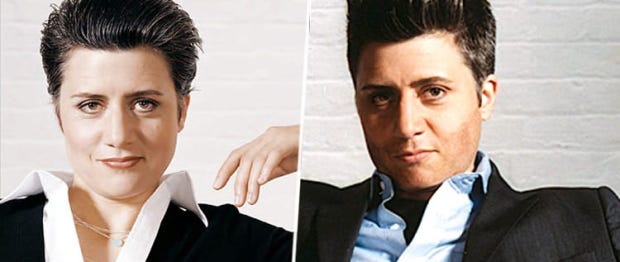
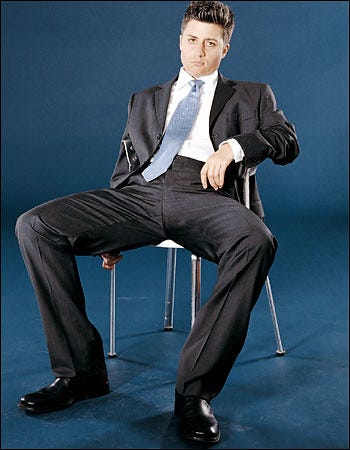


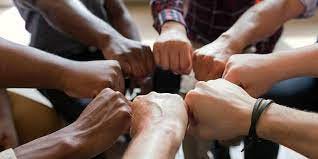
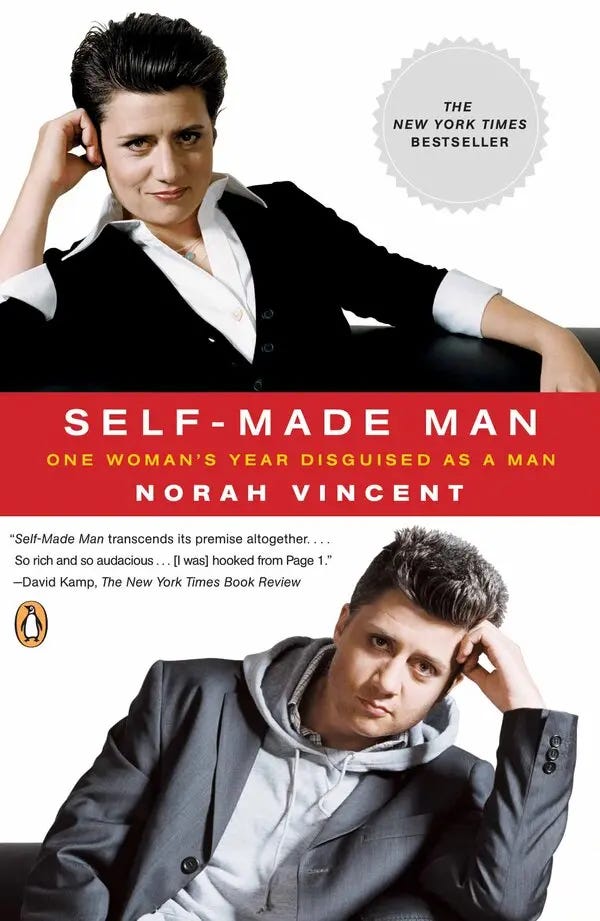

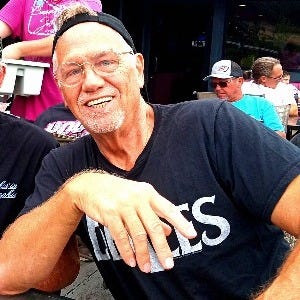
The trauma of a worldview in pieces around your feet would profoundly affect anyone’s sense of identity, regardless of the starting point. I went through something similar without the gender component, but it was equally devastating. Ultimately, it led me to Christianity as a foundation and a new life, lived in the service of the common good. I am truly grateful.
Jim,
Thank you for your tender elegy for Norah Vincent.
What a terrible tragedy that this brilliant loving woman lost her battle for life.
Her courageous exploration of what it is truly like to be a man
revealed truths that must have shocked her to the core:
Most men are not the villains her feminist ideology told her they are.
No.
Most men are highly vulnerable caring creatures
who are in desperate need of the love and acceptance of women.
Maybe she saw no place or herself within her new understanding of the world.
She was already a deeply depressed person--
always inwardly judged by her sadistic superego as a failure.
But now she saw herself as a TOTAL failure.
I would venture that the psychological malignancy (plague)
that eventually broke and killed her
was her passive acceptance of a lie.
The lie promulgated by her sadistic superego:
that passive surrender to its dictates (i.e., succumbing to despair) was strength.
Her ego bought this cruel lie
and concluded that surrender to death
was safer than coming out of her walled off passive despair
and fighting to embrace life.
Nora Vincent had a kind and loving soul.
She was seeking truth when she set out on her exploration.
She had tried and tried to overcome her sick mind.
But whatever treatment she may have had
did not strengthen her to the point that she could win the battle.
She ultimately surrendered completely to the victim position
of recurring failure/disappointment
and had herself euthanized.
Surrender was the seductive poison in her mind
to which I believe she was unconsciously addicted.
I am not blaming, I am explaining.
Despair is never the antidote to the seductive poison of passive surrender
which is harbored in smaller or larger amounts in all of us.
It is only by challenging our unconscious passive surrender
that we survive.
Nora Vincent's defeated ego, speaking prior to her death:
"Despair was strength. Despair was the scab and the scar. The walled city in a time of plague. A closed fortification. A sure thing, because it was always safer, less painful to stop trying than it was to repeatedly try and fail. Failure-disappointment-was a poison in my blood. Despair was the antidote."